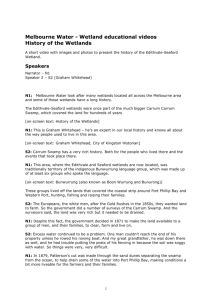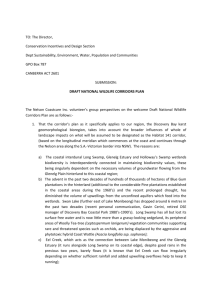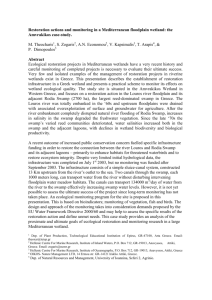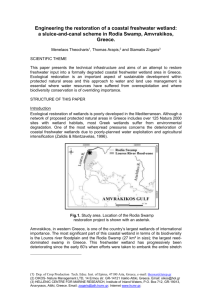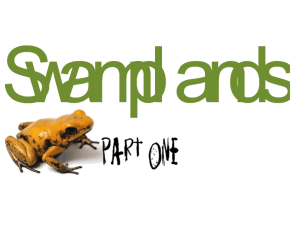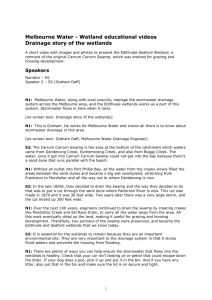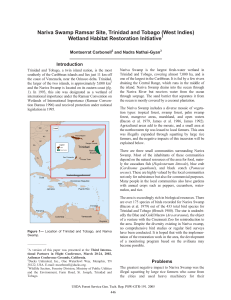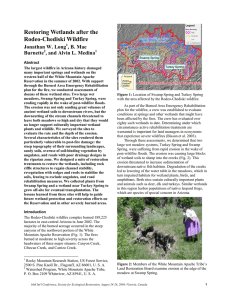The Nariva Swamp is one of the most important protected areas in
advertisement
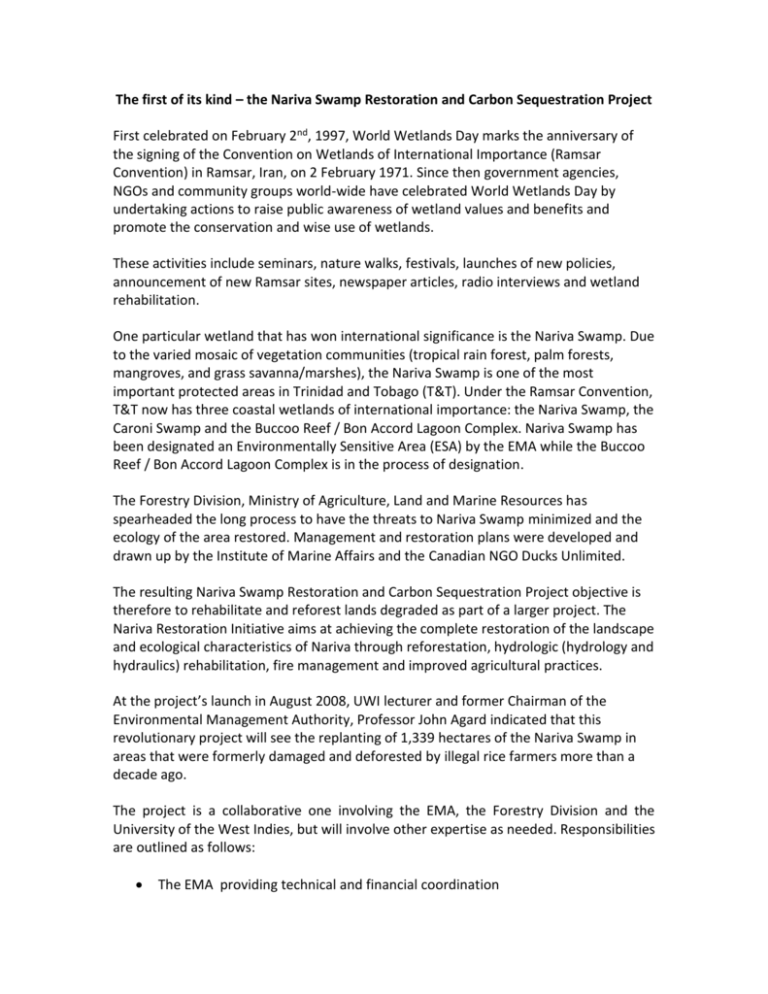
The first of its kind – the Nariva Swamp Restoration and Carbon Sequestration Project First celebrated on February 2nd, 1997, World Wetlands Day marks the anniversary of the signing of the Convention on Wetlands of International Importance (Ramsar Convention) in Ramsar, Iran, on 2 February 1971. Since then government agencies, NGOs and community groups world-wide have celebrated World Wetlands Day by undertaking actions to raise public awareness of wetland values and benefits and promote the conservation and wise use of wetlands. These activities include seminars, nature walks, festivals, launches of new policies, announcement of new Ramsar sites, newspaper articles, radio interviews and wetland rehabilitation. One particular wetland that has won international significance is the Nariva Swamp. Due to the varied mosaic of vegetation communities (tropical rain forest, palm forests, mangroves, and grass savanna/marshes), the Nariva Swamp is one of the most important protected areas in Trinidad and Tobago (T&T). Under the Ramsar Convention, T&T now has three coastal wetlands of international importance: the Nariva Swamp, the Caroni Swamp and the Buccoo Reef / Bon Accord Lagoon Complex. Nariva Swamp has been designated an Environmentally Sensitive Area (ESA) by the EMA while the Buccoo Reef / Bon Accord Lagoon Complex is in the process of designation. The Forestry Division, Ministry of Agriculture, Land and Marine Resources has spearheaded the long process to have the threats to Nariva Swamp minimized and the ecology of the area restored. Management and restoration plans were developed and drawn up by the Institute of Marine Affairs and the Canadian NGO Ducks Unlimited. The resulting Nariva Swamp Restoration and Carbon Sequestration Project objective is therefore to rehabilitate and reforest lands degraded as part of a larger project. The Nariva Restoration Initiative aims at achieving the complete restoration of the landscape and ecological characteristics of Nariva through reforestation, hydrologic (hydrology and hydraulics) rehabilitation, fire management and improved agricultural practices. At the project’s launch in August 2008, UWI lecturer and former Chairman of the Environmental Management Authority, Professor John Agard indicated that this revolutionary project will see the replanting of 1,339 hectares of the Nariva Swamp in areas that were formerly damaged and deforested by illegal rice farmers more than a decade ago. The project is a collaborative one involving the EMA, the Forestry Division and the University of the West Indies, but will involve other expertise as needed. Responsibilities are outlined as follows: The EMA providing technical and financial coordination The Forestry Division as the main implementing agency, providing supervisory manpower and technical expertise (afforestation, ecology) UWI providing the research expertise for the measurement and verification of the sequestration of carbon from the reforested area. This venture would also benefit at least 200 residents of communities in and around Nariva as it will create jobs, provide training and skills on land management. The project also has potential opportunities for research and monitoring, fire protection (outreach and awareness) and tour guides. Funded by the EMA, the Pilot Phase involves the replanting of 15 acres by three community groups planting some 10,000 seedlings of different tree species without the use of insecticides or fertilizers. Headquartered in Plum Mitan, the community groups include Villagers Organisation In Conservation of the Environment (VOICE), the Plum Mitan/Biche Farmers Group and the Plum Mitan Enhancement Committee. Two of the three groups have been mobilised and preparation work has begun in the area known as Block B. Due to the unpredictable weather, the pilot programme will also serve as a trial and error process. According to Kenny Singh, Deputy Conservator of Forest, at the Forestry Division, “This is a learning opportunity and based on the challenges we face we will have a better understanding of which tree species can survive in the areas that were altered by illegal rice farming. Even though we are planting the same species that already exist in the swamp, the conditions for planting in the designated area are not the same.” But are wetlands worth saving? They are, when they have an extremely high value as biological reserves. Swamps or wetlands have numerous functions and provide many ecosystem services. For example, the Nariva Swamp provides the ecosystem service of shoreline protection by acting as a natural buffer to protect inland areas from the destructive impacts of hurricanes and tropical storms. By slowly filtering and releasing the excess water into the ocean, it protects the marine biota and productivity along this coast. Wildlife species benefiting from the restoration of Nariva include some species such as the West Indian manatee (endangered) and the blue and gold macaw (endangered). These are also protected by the Convention on International Trade in Endangered Species (CITES), which requires strict regulation of trade. Other important fauna include anaconda, cayman, capuchin monkey, ocelot, agouti, wild hog, moriche oriole and redbellied macaw – all considerably reduced due to hunting and/or extraction for the pet trade. A first pioneer project for Trinidad and Tobago will be the ‘carbon sequestration’ focus of capturing carbon dioxide in the trees and vegetation through the natural growth of these plants. This concept has gained popularity due to the effects of climate change, largely caused by the increase of Carbon Dioxide in the atmosphere through the burning of fossil fuels. Reforestation is seen as one of the methods of capturing some of this excess Carbon Dioxide from the atmosphere and holding or sequestering it in the tissues of plants. The reforestation and restoration of the ecological characteristics of Nariva will contribute to the conservation of one of the most diverse areas in the Caribbean. It would also be a unique situation where biodiversity would benefit, Carbon would be sequestered and there would be a clear socio-economic advantage to the local communities. It would be the first time this type of restoration is attempted in Trinidad and Tobago, and the sharing of the experience could contribute to the recovery of the severely degraded tropical forest throughout the region. Courtesy the Environmental Management Authority CAPTION FOR POSTER: The international theme for World Wetlands Day 2009 is "Upstream-Downstream: Wetlands connect us all". This is in recognition of how interconnected we all are within river basins and the impact that activities upstream have on the lower parts of a river catchment.
